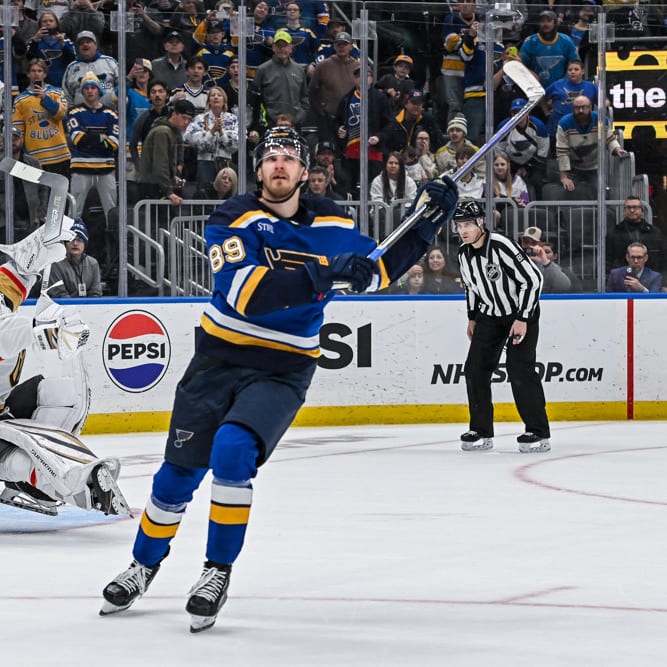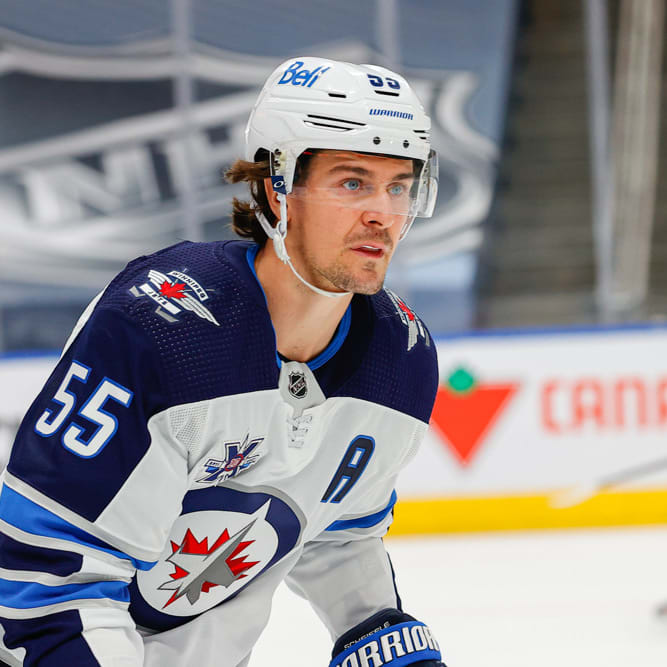This article is part of our From the Press Box series.
Today, from the press box: we have reported on recent signings and players who are still available. Today, we look at the salary cap status of NHL teams who have some roster openings and cap space. We will also look at the other end of the spectrum: teams who are in cap jail and what they might do to get out.
Salary Cap Freedom
New Jersey Devils – The Devils currently have 16 players under contract for the upcoming season, whereas teams typically sign 23 players to their NHL rosters. They also have the option to list the contract of Ryane Clowe ($4.85 million each of the next three years) under long-term injury reserve, which is exempt from the salary cap if they declare him unfit to play this season by opening day. If they choose to add that salary to their existing commitments then they'll $14.6 million in cap space to fill out their roster. By invoking Clowe's LTIR, that figure jumps to almost $20 million. In either scenario they have the edge over most clubs when it comes to signing the remaining free agents.
With the likes of their own unsigned free agents, including aging forwards Michael Ryder and Martin Havlat, along with fringe defensemen Mark Fraser and Bryce Salvador, it seems likely that the Devils will comb through external options to fill out their remaining roster spots.
Florida Panthers – The Panthers have 18 players on the roster and also have the LTIR scenario, which
Today, from the press box: we have reported on recent signings and players who are still available. Today, we look at the salary cap status of NHL teams who have some roster openings and cap space. We will also look at the other end of the spectrum: teams who are in cap jail and what they might do to get out.
Salary Cap Freedom
New Jersey Devils – The Devils currently have 16 players under contract for the upcoming season, whereas teams typically sign 23 players to their NHL rosters. They also have the option to list the contract of Ryane Clowe ($4.85 million each of the next three years) under long-term injury reserve, which is exempt from the salary cap if they declare him unfit to play this season by opening day. If they choose to add that salary to their existing commitments then they'll $14.6 million in cap space to fill out their roster. By invoking Clowe's LTIR, that figure jumps to almost $20 million. In either scenario they have the edge over most clubs when it comes to signing the remaining free agents.
With the likes of their own unsigned free agents, including aging forwards Michael Ryder and Martin Havlat, along with fringe defensemen Mark Fraser and Bryce Salvador, it seems likely that the Devils will comb through external options to fill out their remaining roster spots.
Florida Panthers – The Panthers have 18 players on the roster and also have the LTIR scenario, which could be applied to Marc Savard's contract ($4,027,143 for both of the next two seasons). They also have to pay $2.2 million of Kris Versteeg's contract as a trade consideration from last season, along with a $958,333 buyout for the Brad Boyes contract. If they include Savard's hit on the active roster, they still have $12.94 million to spend. If they use the LTIR exemption, their cap space jumps to $17 million.
They have a significant RFA in Jonathan Huberdeau, whom they will surely sign to (at least) some sort of bridge deal if not a long-term one. He is a former high draft pick with significant upside and figures to be a central figure on the roster. Beyond him, they are not going to fret over the likes of their own remaining UFAs, Tomas Kopecky and Scottie Upshall, neither of whom fits into their future plans.
Anaheim Ducks - The Ducks have committed $54.74 million to 21 roster spots and a $516,667 buyout of Mark Fistric, so they have considerable flexibility with a projected $16.66 million of cap space. They have three significant players on their roster who are sure to be re-signed at some point, including speedy winger Carl Hagelin, who was acquired in a recent trade with the Rangers, and Jakub Silfverberg, who seems to have found a home after a nice regular season and an outstanding playoff performance. These guys are both RFAs, so the Ducks don't expect outside bids for their services. Tomas Fleischmann, another forward whom the Ducks acquired at the last trade deadline, is another consideration as a UFA who really didn't hit his stride in a Ducks uniform.
The Ducks list Anton Khudobin as a UFA on their roster. He was the curious compensation that they asked for in a late-season trade to move defenseman James Wisniewski to the Carolina Hurricanes. They were unable to move Khudobin and do not figure to resign him to an NHL deal because they already have Frederik Andersen and John Gibson signed for next season. I wouldn't be surprised to see Khudobin wind up elsewhere.
Buffalo Sabres – The Sabres are being both prudent and productive in what looks like a very nice bit of progress in their rebuilding efforts. They have 20 players signed for next season and $16.5 million in cap space after the buyout for Cody Hodgson ($1.04 million).
It looks like they need to sign at least a couple defensemen as they have only committed to five blueliners so far. They could look to their own UFA, veteran Andrej Meszaros, but will otherwise find some decent options among other UFAs.
Carolina Hurricanes – The 'Canes are a team that rarely spends near the high end of the salary cap, so their inclusion here is no surprise. They have almost $58 million committed to 20 players and are paying a large buyout (annual cap hit of $2.3 million for breaking the Alexander Semin contract in each of the next six years). They will also carry almost $1 million of Tuomo Ruutu's salary following his trade to New Jersey.
So, they will have a projected $13.4 million in cap space to sign three more players. Expect them to go for inexpensive options that may or may not include their own UFAs defenseman Jack Hillen and forward Patrick Dwyer.
Toronto Maple Leafs – Well, the front office makeover should be just about complete with the addition of veteran GM Lou Lamoriello, but the Leafs also find themselves in a great position of roster and salary cap flexibility. They have signed 22 players with salary commitments totaling $63.8 million, which includes the LTIR-eligible contract of Nathan Horton, which has an annual cap hit of $5.3 million over each of the next five years. If they choose to bury the deal on LTIR, they still have almost $13 million in cap space. It also includes a salary payout of $1.2 million for the Phil Kessel contract (for each of the next six years) and the buyout of Tim Gleason's contract ($1.833 million this year and $1.33 million in the two seasons after). Such is the good fortune of the NHL's primary cash cow.
Later this week, the arbitration case for goalie Jonathan Bernier will be heard, settling on the club's $2.9 million or the Bernier camp's $5.1 million hit. Either way, the Leafs are well positioned to make deals by preying upon salary cap-strapped teams.
Salary Cap Jail
Detroit Red Wings – The Wings have signed 25 NHL player and are over the cap by more than $1.5 million, so clearly they have some decisions to make, possibly seeking waivers on players who can be demoted to their AHL farm club.
Failing that option, they will alternatively have to consider trading their surplus in order to comply with the league-mandated $71.4 million cap ceiling.
They are plagued by having to carry the Stephen Weiss buyout (cap hit of $1.1 million, rising to $1.6 million over the next six years).
Complicating matters for the Wings is the knowledge that they have a few top minor league prospects that are deemed NHL-ready. Players like Anthony Mantha, Dylan Larkin and Tomas Nosek may cause the Wings to move some of their roster players for future considerations. They need to take a hard look at those options, likely dealing with at least one of the teams named above.
Chicago Blackhawks – Even though the Stanley Cup champs have been forced to part ways with the likes of Patrick Sharp and Johnny Oduya, they still find themselves over the cap by $1.15 million. Complicating the situation is that there are 23 players on the roster but only six are defensemen, meaning that they will have to move at least a couple of forwards in order to fill out the defensive depth that is required.
What this all means is that there will be player movement that will take place right up until after the teams submit protected rosters and a final draft of available players takes place later this summer, on the eve training camp.
We may see a repeat of the Isles' defensive makeover when they were able to bring in Johnny Boychuk and Nick Leddy.
Special Announcement
I am very excited to announce that RotoWire will have a fantasy hockey podcast this year, which will be intended to provide daily and season-long hockey poolies with a one-stop shop for all the analysis and opinion that you will need to gain the edge over your competition.
We are targeting the first week of September to make our debut. More details will follow in the coming weeks so check back in this space for more information.










